This is my last entry from L.A. I’ll explain why later, but basically I realized it was not the city for me, despite the past month+ of adventures I’ve had: Week One, Week Two: Part One, Week Two: Part Two, Week Three, Week Four.
Monday 7/17
I realize I really miss walking, and that I have spent very little of the last month outside of a car/bus/train actually experiencing the city. I decide to take a semi-urban hike to the Hollywood Hills from Echo Park, roughly nine miles and an elevation climb of about 1,200 feet (an Empire State Building!). It takes a little over 3 hours, and along the way I fancy myself on a Situationist dérive.
I pass Scientology compounds, mansions, slums, mini malls, beautiful old art deco buildings, most of Sunset Boulevard’s eastern leg, Little Armenia, Thai Town, and plenty of weird sights. It occurs to me that L.A. seems so surreal and familiar at the same time because it’s an unlikely pastiche of different urbanisms. The scattered pockets of dense eclectic pre-war architecture (themselves mostly referent to other places’ vernaculars) don’t quite coherently connect to one another so much as they float in a sea of postwar sprawl and car-centric infrastructure. But bits of big-city reality end up accumulating in all the wasted space of the suburban dream—the dead sidewalk space fronting big blank side walls of supermarkets become tent cities, highway medians host street preachers shouting at passing cars futily, and those odd islands between boulevards and parking lots get occupied by food trucks and other vendors. People sleep and conduct a shadow economy in the grassy areas between the street and gated parks.1950s motels have been converted into studio apartments with businesses below. L.A. feels like the not-so-distant future of so much of America.
At one point my sidewalk ends and I’m forced onto a steep hillside between a freeway onramp and a walled-off neighborhood of mansions patrolled by private security. I stumble upon an entire impermanent shanty town, hidden from the highway by scrub and the wealthy residents above by an impossibly high concrete wall topped with barbed wire. Los Angeles might have one of the worst housing shortages and income disparities I’ve ever seen in an industrialized nation. It’s a thought that sticks with me on my ascent past single-family mansions the size of office parks.
Tuesday 7/18
I temporarily move onto the futon of artists Meghan Gordon and Manny Prieres in Koreatown. (Coincidentally, I’d written about Meghan’s work and Manny’s work, respectively, before I became friends with either or knew they were roommates). Staying with them is awesome. Their apartment is huge, full of windows, one adorable cat, and is walking distance to roughly 2,000 businesses and two subway lines. Their rent is maybe half of what a comparable spot in a convenient New York neighborhood would be. If they had a third bedroom, I would be seriously tempted to sign on as a permanent roommate.
Wednesday 7/19
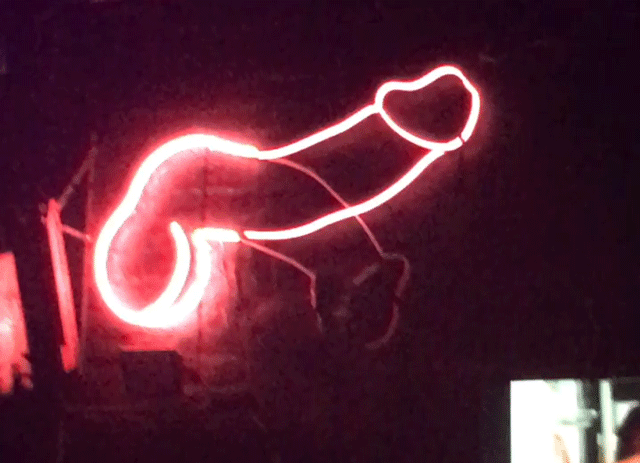
A friend from Baltimore lives close-ish to Meghan and Manny, and we meet up to check out The Faultline, a gay bar that hosts a crazy drag competition on Wednesdays. Someone is dressed as Ursula the sea witch lipsynching to Divine and it’s a show-stopper. It feels appropriate that it’s hump-day and we find this very NSFW GIF-able neon sign. It’s a good night so far.
We leave the club to grab a drink at a quieter spot to catch up, but after 30 minutes of wandering, can’t find another bar. Although it’s before midnight, the streets are almost entirely empty. On our walk, we pass exactly three other people, all of whom are men who catcall her. She says that’s not uncommon. Street harassment is obviously a problem in every city, but it’s usually tempered by having positive or neutral experiences with the vast majority of the thousands of people one encounters in public space in other cities. The lack of pedestrian culture in 90% of L.A.’s surface area (excepting commercial strips in a handful of older neighborhoods) makes public space intimidating. It also emboldens creeps. Basically, in vast swaths of the city, the only people you see on sidewalks are either batshit crazy or scurrying from a car to an indoor space. We both admit we’re slowly becoming more misanthropic the longer we’re here. That thought really bothers me.
We both take Ubers home. I decide it might be time to book a flight out of L.A.
Thursday 7/20
Marcel Alcalá is having an informal showing of his recent drawings at Club Pro, an art space in a loft downtown. The pastel works on paper are really nice—they’re humorous, direct sketches that play with body image and sexuality in the age of dystopic-fake-cheery late capitalism. My favorite depicts an ambiguously-gendered person running gleefully with an erection—wearing only a tube top and go-go boots, one of which bears the acronyms: “DNA YSL NBA STD TSA”—between a house labelled “WELLS FARGO” and another “THE MALL”. In others, the imperfect figures seem to be posing for “sexy” selfies, but end up endearingly goofy.
After the opening, my former roommate from Baltimore invites me to her friend’s loft for a drink. It’s several stories above the eerily-dead-at-night Fashion District with sweeping views of the skyline. We can’t tell if it’s an apartment, coworking space, or event space. We’re both too embarrassed to ask, but joke that it looks remarkably like our old illegal warehouse apartment in Baltimore with several hundreds of thousands of dollars worth of renovations.
I end the night at General Lee’s, a Chinatown cocktail lounge that’s become my favorite L.A. art people hang out. Aria Dean, assistant curator of net art at Rhizome, is DJing. Again, I run into multiple people I’ve known in different cities at different time who all ended up here. Between that and the movie-set-like vibe of Chinatown’s pedestrian passages, L.A. starts to feel more and more like a dream.
Friday 7/21
I’ve spent the night on Liz’s couch to avoid Uber surge pricing, and we take her dogs for a walk along the L.A. River. The L.A. River is basically a concrete drainage ditch full of abandoned objects that the dogs love playing with. We discover that the concrete “river banks” are actually the perfect angle to lay upon in the sun while hungover. She describes the river as “either a triumph of urban planning or a really big urban planning mistake?” We decide L.A. needs a museum dedicated to the history of its divisive built environment. Liz’s bulldog Pickle gifts us with a tire full of potentially-toxic river slime in our laps and our art-viewing plans take a backseat to laundry and showering as a priority for the day.
By the time I get back to Koreatown, Manny and several of his artist friends are heading out to the Bigfoot Lodge. It’s a kitschy bar that looks like a Wes Anderson set where a DJ is spinning the best set of obscure-ish old vinyl I’ve ever heard. The music is so good we don’t even realize we’ve stayed until last call. We all end up chatting at a nearby diner (that looks equally like a Wes Anderson location) until sunrise, when we notice Coyotes have encircled the parking lot looking for easy drunk prey.
Only in Los Angeles.
Saturday 7/22
Manny and I are having some much-needed coffee with one of our mutual friends, artist/curator Jacqueline Falcone. To varying degrees, we all think of Miami as “home” despite the fact that none of us were born there nor live there presently. Jacqueline moved here from Miami about a year ago, and the three of us start talking about the similarities and differences between the two cities. Both have beaches, palm trees, tourists, endless traffic jams, glamour, and the bad urban planning that seems endemic to places with perfect weather in this country.
We all concur that the biggest adjustment is the isolation one can feel in Los Angeles. South Florida is spread out, but nothing like the scale of L.A. But mostly the art scene in Caribbean Miami feels like one big loud family you’re immediately welcomed into with cheek-besitos and all-night parties. There, our friends would ride a bike across a causeway in a tropical storm or sit in gridlock for hours to not miss your opening. Everyone shows up absurdly late for everything, but there’s a sense of ironclad dependability. Meanwhile in L.A., people will sometimes cancel lunch plans if it’s overcast (really) or they just don’t feel like dealing with the logistics (constantly feeling pressured to look your best in public, moving a car or paying for Uber, the vast distances, expensive valet parking everywhere) of leaving the house that day.
I admit that L.A. is starting to feel oppressively lonely when I’m not with friends. In most East Coast or Latin American cities, for example, it’s not considered creepy to strike up a conversation with a stranger at a coffee shop or bar if you’re alone. It’s a lot harder to meet people in L.A.
Manny thinks that’s not such a bad thing—the isolation of L.A. forces you to be more independent. You drink less here, care more about your health, and have less distractions from studio time. Knowing his labor-intensive process (he precisely recreates things such as book and album covers in delicate graphite on black enamel) that makes sense. I, on the other hand, might be too much of an extrovert to deal with the creepiness of all the times I’ve walked for 15+ blocks without passing another human (and in the rare cases I have, been regarded suspiciously for being a pedestrian without the excuse of a dog to walk).
I’m struggling to remember a quote I think I read somewhere (or maybe made up?) as an angsty, wander-lusty teenager. It goes something like “The world’s great megacities always attract lonely people, where they can hide in a teeming crowd, like crying in the rain.” It doesn’t matter, though, because Los Angeles seldom has “teeming crowds” per se. And it certainly doesn’t have rain.
One thing I love about both Los Angeles and Miami is that art openings, to quote Whitney Kimball, have “replaced stuff to do” in a dearth of opportunities for chance encounters. She was writing about New York, but I always think her description is much more appropriate to the sprawly Sunbelt cities: “Non-art friends sometimes ask if I can take them to openings to meet people, which I thought was weird, until I stopped going to art events for a year and realized there aren’t a lot of scenarios in this city where you’re allowed to just stand in a room and mingle for free.”
I can’t think of a better example of this phenomenon than BBQLA, a tiny gallery in the back of a studio building that celebrates openings by roasting an entire pig in the parking lot outside. We arrive and are all struck by how Miami-like the scene is—down to the side dishes of platanos and arroz y habichuelas served in the lot of a one-story warehouse covered in street art. After about two hours chatting with friends outside, I feel guilty I have spent less than ten minutes actually looking at the small show, Cabin Pressure, curated by Quinn Harrelson.
That’s not to say it’s uninteresting. I revisit the exhibition text and realize it’s eerily in synch with what I’d been thinking about the past few days:
“The year is 2017 and over the vast urban sprawl of Los Angeles, the world has just ended, like a cracked egg. Many are taking post-apocalyptic selfies with the remaining minutes of their batteries.
But here, the crust of the peopled desert springs open, and something else crawls out from the earth’s core. It is possibly just a sentient silence, and yet an oasis germinates. Here lives a swamp, a jungle, a digestive system flipped inside out, a white cube of humidity transported from Southern Florida to Southern California.
To what extent does a group of works construct an environment? an ecosystem?
To what extent are they truncated into mechanisms of the jungle? into a single human body?
Like crocodile tears are artificial tears, this is an artificial rainforest, a simulacrum of the swamp. Constructed to push mutability to limits. Here alchemy transmutes mud to matter and nothingness to mud.”
The most-discussed piece in the show is undoubtedly a small Don Quixote on a found metal panel by the late self-taught artist Purvis Young. Young has somewhat of a cult following, and there’s something nice about the un-precious (but also revered) quality of some of the objects he left behind. I’m mostly drawn to Janiva Ellis’s portrait of a melancholy demon, “Bloodlust Halo”. It’s a weird painting, one that elicits unlikely empathy. Most people don’t want to linger with me in the tiny exhibition space, though, because there’s an installation of handmade dirt-and-paper bricks that smells overwhelmingly like pee. For a show with only six or seven artworks, it sure packs a sensory punch.
Sunday 2/23
File this under the “stuff to do” category of art happenings: I’m on my way to a miniature golf course in South Pasadena. I think this was a “Suggested Event” for me on Facebook, but I can’t remember the name or find the information about it anywhere and I suspect the friends I’ve dragged along are beginning to think I made it up as our Uber winds through a suburban park.
We arrive, though, and lo and behold there’s a small group of art-looking people hanging out in the snack bar of the golf course. We ask them if we’re in the right place, and they explain that Phil Davis has been curating a series of monthly group shows, called MINIBAR, in the club. The work is all small and kind of easy to miss, which is actually a nice layer to enjoying the overall unlikeliness of the idiosyncratic setting. Los Angeles has become known for art shows in small, strange places, but this one might take the cake. There are 2D works scattered around the walls above booths, and a video by Jake Eisenmann loops on the TV behind the bar.
I’m a big fan of Davida Nemeroff’s “Liza Six Pack,” which comprises simply a plastic six-pack holder superimposed over a Polaroid of Liza Minnelli in a brass frame. Other highlights include Jessica Williams’ “Keep on Dancing Til The World Ends,” a washy watercolor of a girl looking over her shoulders while walking her bike. She’s wearing booty shorts that say “BABY” on the ass and, like Liza, is a little funny/sad/creepy.
I bum a cigarette from someone I’m convinced I’ve met somewhere before—another art opening perhaps? A friend-of-a-friend’s dinner party? But they don’t remember me. This has happened to me three times in L.A. Later, someone will whisper in my ear that I recognize these people because they had supporting roles on the type of T.V. shows you lovingly binge-watch on Netflix when you’re sick. My urge to facepalm never wears off.
We end the night by walking through (but not playing) the miniature golf course, and fantasize about which structures would make the best tiny house squats.
Monday 2/24
I’m leaving a gym on Wilshire Boulevard at dusk and realize I’m across the street from LACMA. The sun is setting, and Chris Burden’s epic public sculpture “Urban Light” has just been illuminated. It’s really, really beautiful. From this distance, the gaggle of selfie-takers doesn’t even seem annoying. I’m struck with a sense of regret that I probably don’t have time to make it to all the museums I wanted to see. I debate pushing back my flight when I get back to my computer.
On the walk home, though, I pass through the dark dead space between Miracle Mile and Koreatown. There, two inhabitants of a tent village that’s sprung up in the yard of an abandoned brutalist office building follow me for several blocks, shouting alternately homophobic and (incorrectly-assigned) racial slurs until I cross into the bright neon and peopled-sidewalks of Koreatown. I’m beginning to feel like Los Angeles is hell-bent on reminding me that it hates me every time I start to love it.
Wednesday 7/26
I’m at a taco cookout at Big Pictures Los Angeles, an art space run by artist Doug Crocco about a 10 minute drive south of Koreatown. The space has several rooms, one of which is functioning like an open studio of Doug’s own recent work, and another showing excerpts of Steve Gladstone: The End of Pictures alongside works from the group show Polaroid Black. BPLA also has the coolest toilet seat I’ve ever seen in a gallery, made from colored pencils in resin. It’s a really nice space that strikes one of the best balances I’ve seen here between professional and casual.
Manny Prieres has a piece in Polaroid Black, a detail from the cover of the Joy Division album Closer, enlarged and rendered in hand-drawn graphite. Until you’re right on top of it, you’d swear it was a silkscreen. It occurs to me that Manny feels like an old friend because his work would’ve appealed as much to my younger, more punk-rock self as it does to me today.
Doug Crocco’s colored pencil drawings are just as meticulous and lovingly crafted. At first, I mistake them for oil paintings or collage. The appeal of the distraction-free studio life is starting to reveal itself to me.
Thursday 7/27
It’s my last night in the United States for the foreseeable future, and I want to gorge myself on Ethiopian before heading to Mexico City (it’s oddly my one comfort food you can’t find in the world’s second biggest city). Liz, ever the obliging tour guide, takes me to Little Ethiopia to meet up with a friend at a vegan spot and it’s amazing. We end the night miles away at Hop Louie, a Chinatown dive bar known as a go-to spot for drinks after openings and a fantastic juke box. Tonight though, it’s kinda dead.
I step outside with a friend and realize the things I’m really going to miss about L.A. Chiefly, all my friends who keep trickling out here for the promises of big-ish houses, careers, and endless sunshine. Sometimes those dreams are actually fulfilled! Sometimes though, people end up endlessly stressed over car payments and the dead-end jobs they necessitate. L.A. seems singularly magnetic to the best (and sadly, many of the worst) people of the 25-45 demographic. Maybe I’m either too immature or prematurely crotchety for the appeal?
At any rate, I could see myself living in Chinatown. Ironically, its faux-pagoda-lined pedestrian malls are likely one of the earliest examples of “Disneyland Urbanism” I can think of—a genre of made-for-tourists architecture that usually makes my cold, modernist eyes roll. But this kitschy simulacrum of a neighborhood has somehow accrued a lived-in vibe of a real place that L.A.’s far older fake chateaus haven’t quite. There are people on the “street” here, and even if they’re just outside for a smoke, that’s a world of comfort.
L.A., this isn’t goodbye forever, just a “see you later”. To quote your former governor, I’ll be back. But probably as just another tourist.
Postscript 7/31
I am publishing this from Mexico City. I really wanted to fall in love with Los Angeles, but despite my best efforts, I couldn’t. I really wanted to. The art scene is great. The weather is usually amazing. Mostly, I wanted to love L.A. because so many of my favorite people in the world have made the city home for various reasons. Their hospitality (and that of their friends) has been so humbling.
But that warmth stands in contrast to a city whose culture, in general, is at times pretty unfriendly. I realized L.A. can be a very lonely place when you’re by yourself with unstructured time. Being a human body moving through space outside of a car can be downright depressing, if not dangerous. It’s not really the kind of city for wandering around and people watching or spur-of-the-moment unplanned encounters. I know that those things aren’t important to everyone, but since being back in a more conventional “city” city, I have to admit that they are to me.
It dawned on me that I was neurotically starting to feel like a second-class citizen on account of not having a car, a buttload of disposable income, nor a face/body/wardrobe worthy of 100k+ Instagram followers (there were literally times people cropped me out of photos, because I suppose I was “off brand”). I found myself becoming a little vain, self-conscious, suspicious, and resentful—qualities I don’t like to see. A lot of that has to do with money. The myth that L.A. is “affordable” only holds water when housing is compared to San Francisco, London, New York or a handful of other global financial centers. Indeed, it seems like a substantial chunk of the “affection” a lot of transplant artists have for L.A. is rooted in resentment toward New York—as if those were the only two cities on the planet. When one accounts for transportation costs and the obsessive commodification of “health culture” (example: eating vegetarian in Los Angeles is inexplicably more expensive than any other city I’ve ever lived in) L.A. ends up being pretty damn pricey.
I’ll definitely be back in Los Angeles at some point—as I mentioned, it’s home to so many of my best friends. And I never made it to the beach! But I don’t think I can live there. My first night back in Mexico City, I actually teared-up a few times because I realized I wasn’t crazy for feeling isolated in L.A. I missed walking in crowded streets, and strangers being nice to me, cheap food, and dancing not just for the sake of an Instagram story (it’s noticeable how much less time people spend on their phones outside of the Los Angeles bubble).
Honestly, I am probably just personally incompatible with the L.A. lifestyle. I’m sharing this because I suspect a lot of other people tempted to relocate there might be too. I have plenty of friends who are super happy living there, but also met plenty of people who weren’t. I guess I just fall into the latter category.







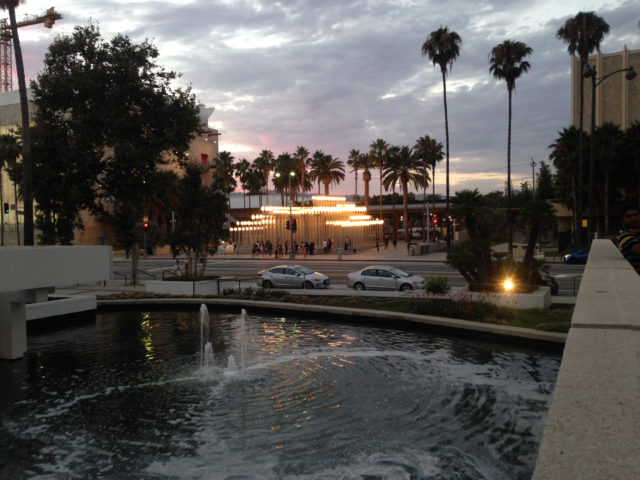
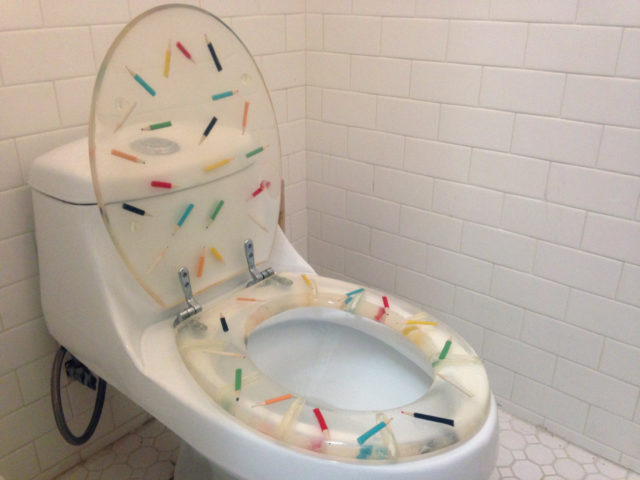
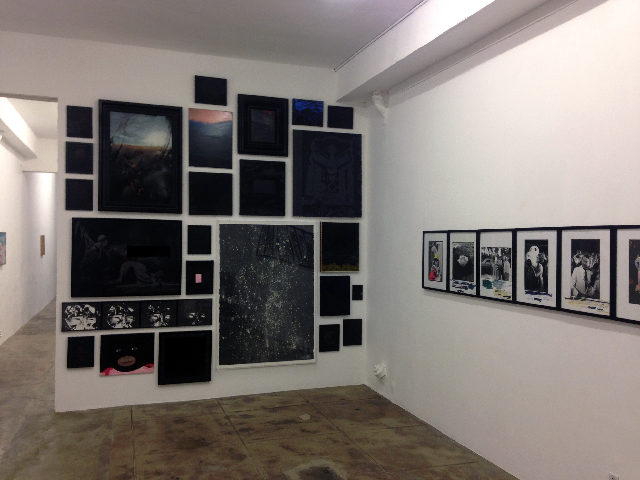
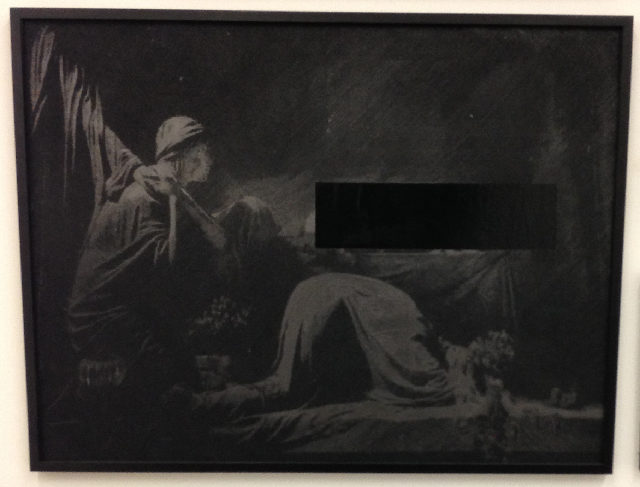
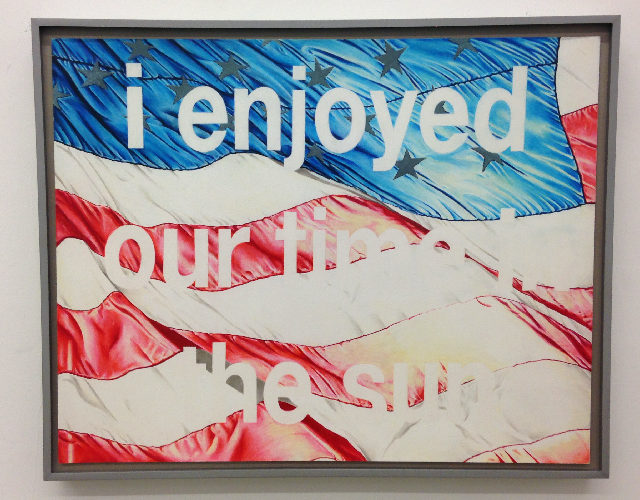

Comments on this entry are closed.